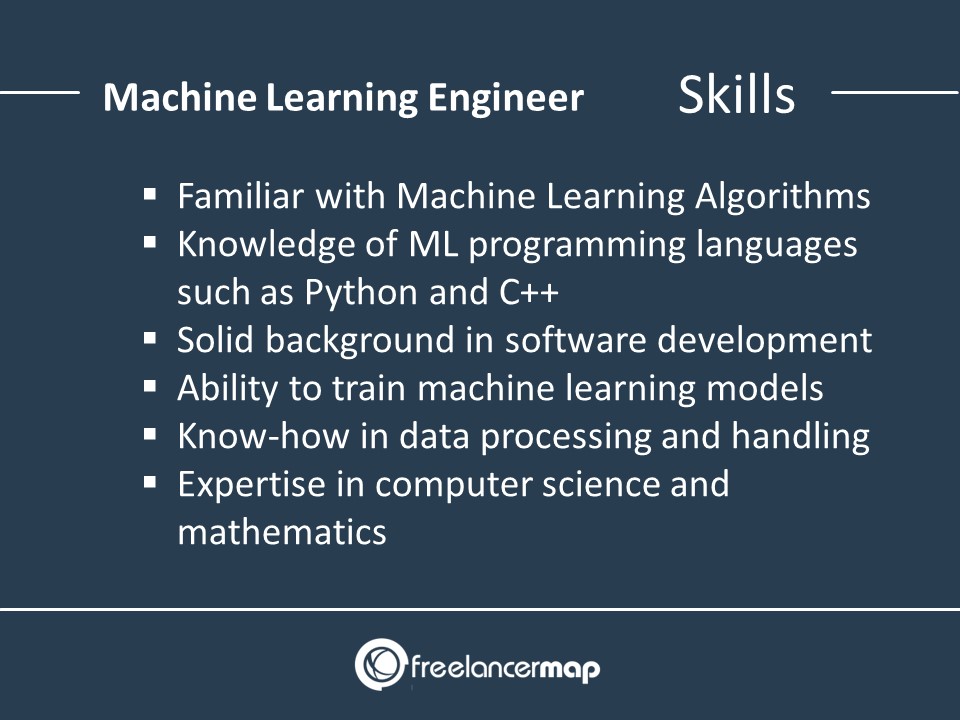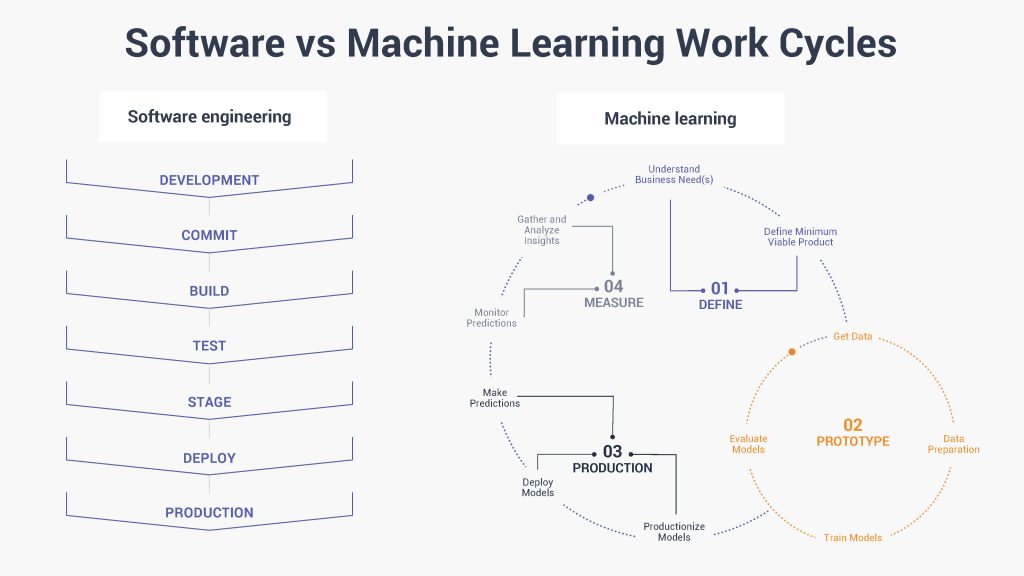All Categories
Featured
Table of Contents
- – The Ultimate Guide To Master's Study Tracks - ...
- – Excitement About Machine Learning Engineer Lea...
- – Getting The Machine Learning Developer To Work
- – Some Known Facts About What Do I Need To Lear...
- – The Single Strategy To Use For Machine Learn...
- – The Basic Principles Of How I Went From Soft...
You probably understand Santiago from his Twitter. On Twitter, every day, he shares a great deal of useful features of maker learning. Many thanks, Santiago, for joining us today. Welcome. (2:39) Santiago: Thanks for welcoming me. (3:16) Alexey: Before we go right into our primary topic of moving from software design to artificial intelligence, maybe we can start with your background.
I started as a software application designer. I went to university, got a computer technology level, and I began building software program. I believe it was 2015 when I chose to go with a Master's in computer technology. At that time, I had no concept concerning machine discovering. I really did not have any type of interest in it.
I recognize you've been making use of the term "transitioning from software application design to device learning". I such as the term "including in my capability the artificial intelligence skills" more due to the fact that I assume if you're a software program designer, you are currently offering a great deal of value. By integrating artificial intelligence currently, you're augmenting the effect that you can carry the industry.
That's what I would do. Alexey: This returns to one of your tweets or perhaps it was from your training course when you contrast two methods to learning. One strategy is the problem based method, which you just spoke about. You find a problem. In this instance, it was some issue from Kaggle concerning this Titanic dataset, and you simply discover how to address this problem making use of a particular device, like choice trees from SciKit Learn.
The Ultimate Guide To Master's Study Tracks - Duke Electrical & Computer ...
You first discover math, or direct algebra, calculus. When you know the mathematics, you go to equipment learning concept and you discover the theory. After that four years later, you lastly pertain to applications, "Okay, just how do I use all these four years of mathematics to resolve this Titanic problem?" ? So in the former, you type of conserve yourself some time, I believe.
If I have an electrical outlet here that I require changing, I don't wish to most likely to university, spend 4 years recognizing the math behind electrical power and the physics and all of that, simply to alter an electrical outlet. I would certainly rather begin with the electrical outlet and find a YouTube video that aids me experience the trouble.
Bad analogy. Yet you understand, right? (27:22) Santiago: I actually like the concept of starting with an issue, trying to throw out what I understand approximately that trouble and understand why it does not function. After that order the devices that I require to address that trouble and start excavating much deeper and much deeper and much deeper from that factor on.
Alexey: Maybe we can speak a little bit concerning learning resources. You pointed out in Kaggle there is an introduction tutorial, where you can get and discover how to make choice trees.
The only requirement for that program is that you understand a little bit of Python. If you go to my account, the tweet that's going to be on the top, the one that says "pinned tweet".
Excitement About Machine Learning Engineer Learning Path
Even if you're not a developer, you can begin with Python and function your way to even more device knowing. This roadmap is focused on Coursera, which is a platform that I truly, really like. You can examine all of the programs free of cost or you can pay for the Coursera subscription to get certifications if you intend to.
Alexey: This comes back to one of your tweets or possibly it was from your program when you contrast two approaches to knowing. In this situation, it was some problem from Kaggle about this Titanic dataset, and you simply learn exactly how to resolve this trouble using a details tool, like decision trees from SciKit Learn.

You first learn mathematics, or straight algebra, calculus. When you know the math, you go to equipment learning theory and you discover the theory.
If I have an electric outlet right here that I need replacing, I don't intend to go to university, spend 4 years recognizing the math behind electricity and the physics and all of that, simply to change an outlet. I would instead start with the outlet and discover a YouTube video that helps me undergo the problem.
Santiago: I truly like the idea of starting with a problem, trying to throw out what I know up to that issue and understand why it doesn't work. Order the tools that I require to address that issue and start digging much deeper and deeper and deeper from that point on.
So that's what I typically advise. Alexey: Maybe we can talk a little bit regarding learning resources. You stated in Kaggle there is an introduction tutorial, where you can get and learn exactly how to make decision trees. At the start, before we started this meeting, you mentioned a couple of publications.
Getting The Machine Learning Developer To Work
The only demand for that course is that you understand a little bit of Python. If you go to my account, the tweet that's going to be on the top, the one that states "pinned tweet".
Even if you're not a programmer, you can start with Python and function your way to more equipment discovering. This roadmap is focused on Coursera, which is a platform that I actually, really like. You can audit all of the courses absolutely free or you can pay for the Coursera subscription to get certificates if you wish to.
Some Known Facts About What Do I Need To Learn About Ai And Machine Learning As ....
That's what I would do. Alexey: This comes back to among your tweets or maybe it was from your course when you contrast 2 approaches to knowing. One technique is the trouble based strategy, which you simply spoke about. You locate a problem. In this instance, it was some issue from Kaggle concerning this Titanic dataset, and you simply discover just how to resolve this issue using a details device, like decision trees from SciKit Learn.

You first learn mathematics, or linear algebra, calculus. When you recognize the mathematics, you go to device knowing concept and you learn the theory.
If I have an electrical outlet below that I require changing, I don't want to most likely to university, invest 4 years understanding the mathematics behind power and the physics and all of that, just to transform an electrical outlet. I prefer to start with the outlet and discover a YouTube video clip that aids me experience the issue.
Santiago: I truly like the idea of starting with a problem, trying to toss out what I know up to that issue and recognize why it does not function. Get hold of the devices that I need to solve that issue and start excavating much deeper and deeper and deeper from that point on.
To ensure that's what I typically advise. Alexey: Possibly we can talk a little bit regarding learning resources. You mentioned in Kaggle there is an intro tutorial, where you can get and find out just how to choose trees. At the beginning, prior to we started this meeting, you pointed out a couple of publications.
The Single Strategy To Use For Machine Learning Developer
The only demand for that training course is that you understand a little bit of Python. If you're a programmer, that's an excellent base. (38:48) Santiago: If you're not a developer, after that I do have a pin on my Twitter account. If you most likely to my account, the tweet that's mosting likely to be on the top, the one that states "pinned tweet".
Even if you're not a developer, you can begin with Python and work your means to even more device discovering. This roadmap is concentrated on Coursera, which is a system that I actually, really like. You can examine all of the programs completely free or you can pay for the Coursera membership to obtain certificates if you desire to.
That's what I would certainly do. Alexey: This returns to among your tweets or perhaps it was from your program when you contrast 2 approaches to discovering. One technique is the issue based approach, which you simply discussed. You find a trouble. In this case, it was some problem from Kaggle regarding this Titanic dataset, and you simply discover just how to fix this problem using a certain tool, like choice trees from SciKit Learn.
You first find out mathematics, or straight algebra, calculus. When you understand the mathematics, you go to maker understanding theory and you discover the concept.
The Basic Principles Of How I Went From Software Development To Machine ...
If I have an electric outlet here that I require changing, I don't desire to most likely to college, invest 4 years understanding the mathematics behind electrical energy and the physics and all of that, just to alter an outlet. I would rather start with the outlet and discover a YouTube video clip that helps me go through the problem.
Santiago: I actually like the concept of beginning with an issue, attempting to toss out what I know up to that problem and recognize why it doesn't function. Grab the tools that I need to solve that issue and start excavating deeper and deeper and much deeper from that factor on.

Alexey: Maybe we can chat a bit regarding finding out sources. You discussed in Kaggle there is an intro tutorial, where you can get and find out how to make decision trees.
The only demand for that training course is that you understand a little bit of Python. If you go to my account, the tweet that's going to be on the top, the one that states "pinned tweet".
Also if you're not a designer, you can start with Python and work your method to even more artificial intelligence. This roadmap is focused on Coursera, which is a platform that I really, actually like. You can audit all of the programs absolutely free or you can spend for the Coursera subscription to obtain certificates if you wish to.
Table of Contents
- – The Ultimate Guide To Master's Study Tracks - ...
- – Excitement About Machine Learning Engineer Lea...
- – Getting The Machine Learning Developer To Work
- – Some Known Facts About What Do I Need To Lear...
- – The Single Strategy To Use For Machine Learn...
- – The Basic Principles Of How I Went From Soft...
Latest Posts
How To Create A Study Plan For A Software Engineering Technical Interview
Mock Data Science Interviews – How To Get Real Practice
How To Prepare For An Engineering Manager Interview – The Best Strategy
More
Latest Posts
How To Create A Study Plan For A Software Engineering Technical Interview
Mock Data Science Interviews – How To Get Real Practice
How To Prepare For An Engineering Manager Interview – The Best Strategy